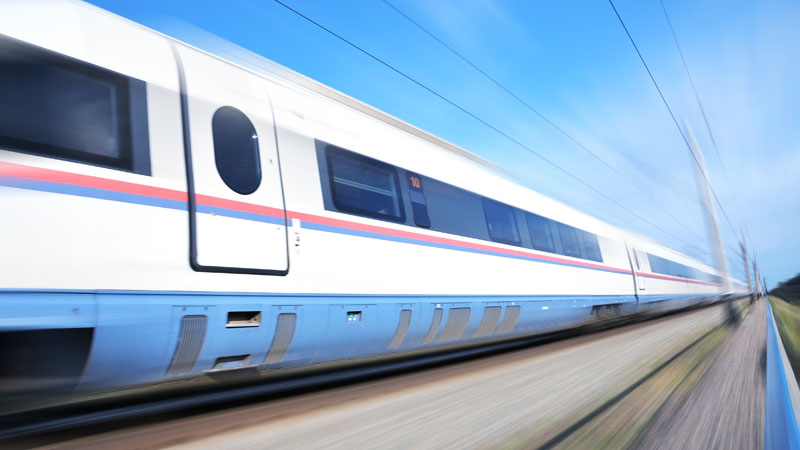Rail travel is safe and convenient. Unfortunately, it is also slow and usually very expensive. But that could change in the future, says //next columnist Don Dahlmann.

When you consider which transport technology has the least environmental footprint, you quickly come to the conclusion that it is ‘rail’. No mode of transport emits less CO2 per person and is capable of covering large distances quickly and safely. Rail was the number one mode of transport right up to the 1960s. Legendary trains, including the “Trans Europe Express”, connected the major European cities several times a day and were very popular, despite their high ticket prices. But then came the rise of cars and, above all, the emergence of planes. Compared to the train, above all the latter had the advantage of being considerably faster. As the number of passengers increased, ticket prices gradually fell until they reached today's level.
However, the advancement of cars and, above all, air travel did not make railways superfluous; but instead of expanding the European networks, the projects were almost completely halted. Only the connections from Germany to Paris, and between London and Paris were extended and improved. And it was the Channel Tunnel between Great Britain and France itself that showed that fast train connections can significantly reduce air traffic. The journey from London to Paris takes two hours: it takes longer to get to the airport.
Trains continue to have massive benefits in terms of infrastructure. Railway stations are usually located directly in city centres, while airports are located far outside. The airports in Munich and the finally completed BER Airport in Berlin are good examples of this: in both cases, it takes about an hour to get to or from the city. The journey times are so long that you can even travel from Berlin to Munich faster by train than by plane.
However, this time advantage is only possible on high-speed rail links of which Europe has very few. The situation is very different in China. For several years now, a train has been travelling between Beijing and Shanghai at speeds of up to 350 km/h. The journey time between the two cities is approximately 5 hours. The impressive fact is that it travels 1300 kilometres, which equates to the distance between Leipzig and Barcelona.
It could be even faster if you believe the developers of the Hyperloop, a train that travels in vacuum tubes and can reach speeds of up to 1000 km/h. It would reduce the above journey time from Leipzig to Barcelona to around 2 hours. Who needs a plane?
Elon Musk, who is building electric cars with his Tesla company and conquering space with SpaceX, is one of the people behind it. Initial technical tests with the Hyperloop have already been successfully completed and there is interest from many countries. Countries that do not yet have a well-developed infrastructure but need to cover large distances have a specific need for this technology.
But, of course, there are still a few hitches with the Hyperloop. First and foremost, a completely new infrastructure has to be built: after all, the trains need a tube in which to travel. These tubes can be constructed on stilts overground or laid underground. But how do you build a tube, whether above or below ground, across Europe? The protests of local residents alone are likely to delay the project for decades.
The Hyperloop is a wonderful Utopian idea, but it is probably not feasible in densely populated Europe. And why should it be? The EU already has a dense rail network. It would therefore be cheaper to rebuild the existing tracks for high-speed trains. Deutsche Bahn is currently working on a number of projects that demonstrate that this is possible. However, it also needs political will on the part of the EU nations to invest in this technology.
And there is no need to build a high-speed rail link in every corner of Europe. It would be enough if these high-speed links could connect cities so that people could reach them by rail in under four hours. This would give rail transport a new future and would reduce flying, which is not necessarily the most environmentally-friendly way of travelling.
Text: Don Dahlmann
Most popular